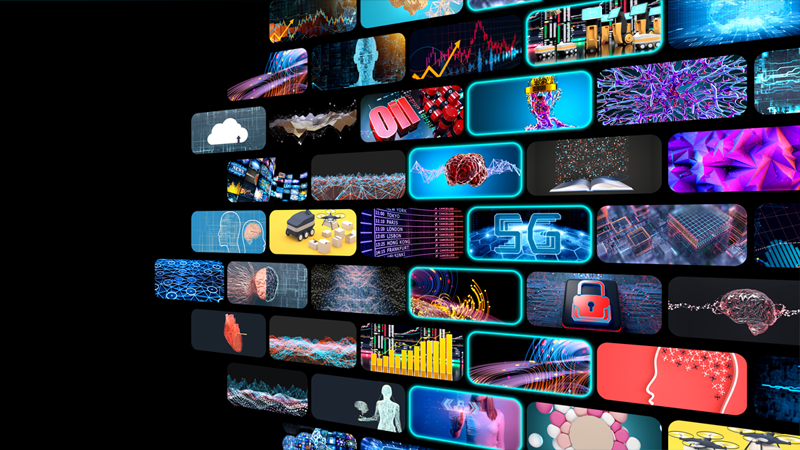By Stephen Plante
December 6, 2023
"A human being is no thing."[1]
No longer shackled by the constraints of the Industrial Age, people worldwide are being liberated by the digital age to be human again. Digital capabilities enable ubiquitous human interaction. They are the gateway to the future, enabling next-level systemic human interaction, collaboration, and accomplishment at scale. We are at the dawn of a new era, in which people count more than ever and human factors long devalued in the Industrial Age are being rediscovered. As we rediscover or evolve to the power of purpose-based social systems transcending the value creation system, these social systems are the growth engines of the future.
Back to the Future
Digital capabilities transform how we interact to achieve a common purpose. The next dimension of exponential performance and human accomplishment involves tapping human factors that foster vibrant social systems in pursuit of this shared interest.
Deep, cross-functional collaboration has emerged as a critical enterprise capability, injecting the human experience across the holistic value creation system, wherein relationships are viewed as twoway, value-creating interactions for mutual benefit in pursuit of shared interest.
True, meaningful, and cross-functional collaboration eliminates siloes and unites people with shared purpose and accountability.
This type of collaboration stems from the culture that binds us together—the attitudes, feelings, values, and behavior that characterize and inform our interaction, or any social group within it. The essence of true, meaningful, and cross functional collaboration boils down to warmth and competence.
In their book The Human Brand: How We Relate to People, Products, and Companies, Fiske and Malone state, “We judge others almost instantly along two categories of social perception, warmth and competence. What are the intentions of other people toward me? How capable are they of carrying out those intentions?”[2]
Historically, our focus has been on competence (enablement) and not enough on understanding warmth (engagement). We come from an era that eschewed warmth in favor of the cold efficiency of competence, in which humans were treated as mere things. This time is quickly ending. Humanizations that take a systematic approach factoring in human needs and behaviors will become the dominant players of this emergent era. They will thrive in this vastly different world now emerging.

Illuminating the Blind Spot
“Most companies are still dominantly sales-centric and product-centric,” states Dr. Michael Lowenstein. “[They] are obsessed with the pressure of new customer acquisition and meeting macro KPIs that represent little influence on customer behavior. They are blind to the opportunity of infusing the human experience represented by a ‘people-first’ concept. They will be disrupted by those that do.”[3]
Paving the way are “…humanized firms or firms of endearment…where all stakeholders thrive: customers, investors, employees, partners, communities, and society.” Humanized firms focus on[4] creating relationships that are mutually beneficial, wherein reciprocal value exchange comes first and foremost for equitable benefit within a context of shared purpose and passion.
The Rise of Business Relationship Management
Business relationship management (BRM) has emerged as a critical enterprise capability, infusing human experience across the holistic value creation system as it undergoes transformation propelled by digital capabilities. BRM orchestrates the formation, sustainability, and expansion of synergistic human networks, in sync with the strategic shaping of the ecosystem.
“Business relationship management eliminates silos, converging people across an organization with shared ownership of business strategy and business results,” says Aaron Barnes, CEO, and co-founder of Business Relationship Management Institute[5]. The rise of BRM as a discipline and organizational capability is a precursor of what is yet to come—an age in which human collaboration for common purpose will dominate and those who do not adapt will fade away rapidly.
The emphasis is on the “R” of BRM: relationships. Understanding human emotion (warmth) results in a “relationship renaissance,”[6] which involves cultivating deep, trusting, and communal relationships between people who have a part to play in the value creation system.
The Magic of Trust
We hail from a heritage of conducting business without trust. The focus has been on optimizing one’s own position, rather than what benefits the collective whole.
An accelerant in the value creation cycle is the powerful attribute of trust, allowing people to build strong relationships with one other in pursuit of a shared goal. When trust-based relationships form, the value creation cycle enters a state in which shared interest trumps self-interest.

“Trust and emotions are also all about humanizing business processes and creating experiences that add both differentiation and unique value,” states Dr. Lowenstein. Without[7] trust and common purpose, organizational siloes continue to hinder collaboration, in turn having a negative impact on velocity, agility, efficiency, and resilience.
Culture: The Font of Prosperity
The scope addresses not only an optimized human experience that leverages digital, but also “…how the enterprise culture needs to flex and align with this new value proposition.”[8]
When human needs are met, they become the root drivers of a flourishing culture, resulting in a new era of human accomplishment and prosperity.

Each level of maturity in the pyramid is associated with foundational human needs. Progressively higher levels of human loyalty and accomplishment are unlocked by embracing practices that drive higher levels of passion, collaboration, innovation, and productivity.
Moving the Needle
A measure of human productivity is employee engagement, which has been stuck in the low-30- percent range for years (Fig.1). Rather than promoting an environment in which humans thrive, the predominant focus has been on minimizing cost—again, an echo of a past in which humans were viewed as mere resources and a cost to be managed to realize full human potential.

Flourishing culture is the center and source of speed, agility, and resilience. To build this type of culture, companies must address both human engagement and enablement as a holistic system. Engagement addresses passion, mood (energy), and healthy relationships—therefore driving speeds of interaction, quality of collaboration, and organizational resilience. Enablement addresses clarity around outcomes, roles, responsibilities, and decision rights fueled by capable processes and adequate resources, knowledge, and skills. It also accelerates the speed of thought and work by removing the barriers and interruptions to human cognitive flow and workflow.

Leadership sets the stage for both. Since leaders are transmitters of behavior, they will drive the tone of human engagement and enablement, thus accelerating the speed of fruitful innovation.
The Payoff
The result of a flourishing culture includes—but is not limited to—a flourishing customer and employee experience, flourishing innovation, and flourishing programs and external partnerships.
In their work addressing the emotional customer experience, Beyond Philosophy has developed a Hierarchy of Emotional Value, itemizing twenty emotions that influence customer spend decisions in the short term and long-term loyalty.

The challenge is to scale the emotional experience that emanates from understanding and having the means to cultivate the intended culture. This is the missing piece of the systemic puzzle. Dr. Lowenstein states, “Translating these subconscious emotions and feelings is the ‘holy grail’ of customer journey design,”[13] realized via flourishing enterprise culture.
The process of accomplishing successful programs has been the bane of business for decades. The trilogy of people, process, and technology is ubiquitous—it’s the people side that has proven to be a challenge, even after the discipline of organizational change management (OCM) was introduced in the 1980s. In many organizations, both OCM and BRM swim against the tide since they serve as interventions in sub-optimal cultures and culture often wins out.
What if we could tie together fundamental human needs that manifest in desirable human behavior, emanating from a vibrant, flourishing culture that encourages speed, collaboration, agility, and consistently successful business outcomes? The answer is we can.

Making the Intangible Tangible
The problem with culture is that the human factors shaping it are not comprehensively understood and have been intangible, until now. Frank Wander, founder, and CEO of PeopleProductive, has applied behavioral science that has been researched and proven over the past 100 years into a model of human factors. These are the root drivers of human behavior and flourishing culture, and they have led to the development of the first operating system of the human infrastructure —Talent-OS.

Now the intangible is truly tangible at the root driver level, enabling a continuous process to cultivate flourishing culture and driving successful business outcomes. It is the missing link that demystifies the drivers of high-performance culture and optimum human productivity, equipping leaders with the means to manage the human side of business comprehensively.
Understanding the Sequence
The sequence to building a flourishing culture starts with the vision that instills passion across the ecosystem systemically. Co-founder and managing director of FCB Partners, Steve Stanton wrote about six critical moves traditional organizations can make the move “from Taylor to Tomorrow,” the first of which is “Inspire Them with a Powerful Purpose!”[14]
He wrote, “Travel back in time and imagine that you meet two medieval stonemasons hacking away at rocks. You ask the first, “What are you doing?” and he answers, “I’m chipping some marble.” You ask the second the same question, but he answers, “I’m building a cathedral.” That’s the essence and power of purpose.”[15]

Chris McGoff, co-founder of The Clearing, Inc., recanted a similar story and gave it a label—the Ennoblement Prime—before asking the question, “Does your vision elevate people in degree and excellence and respect and inspire them to act boldly?”[16]
The power of purpose not only ennobles employees; it inspires all stakeholders across the enterprise ecosystem—enveloping customers and external business partners. The power of purpose is at the center of firms of endearment and conscious capitalism.
This, in turn, sets the stage for engagement, serving the human needs of safety, warmth, and the heart. Once inspired and emotionally engaged, humans will cocreate the future by enabling it to become a vibrant social system as a collective whole.
While the Industrial Age showed a lack of attention to the dimensions of human ennoblement and engagement, it is time to create a culture where humans flourish, channeling all energy into serving each other’s needs and common interest instead of self-interest.
Leadership holds the keys—leading from the whole, rather than the top. Hierarchy is dead. Linear thinking is dead. As we evolve in the digital age, the font of prosperity in the future involves inspiring, engaging, and enabling the collective capability of people.
Bibliography
- Fiske, Susan T., and Chris Malone. The Human Brand: How We Relate to People, Products, and Companies. San Francisco: Jossey-Bass, 2013.
- Frankl, Viktor. The Will to Meaning: Foundations and Applications of Logotherapy. New York: Plume, 2014.
- Gillespie, Richard. Manufacturing Knowledge: A History of the Hawthorne Experiments. Cambridge: Cambridge University Press, 1991.
- Goleman, Daniel. Emotional Intelligence: Why It Can Matter More Than IQ. New York: Bantam Books, 1995.
- Lowenstein, Michael. Employee Ambassadorship: Optimizing Customer-Centric Behavior from the Inside-Out to Outside-in. New York: Business Expert Press, 2017.
- McGoff, Chris. The Primes: How Any Group Can Solve Any Problem. Malden: John Wiley & Sons, Inc., 2012.
- McLeod, Saul. “Maslow’s Hierarchy of Needs.” Simply Psychology. 2016. https://www.simplypsychology.org/maslow.html
- Sheth, Jagdish N., Rajendra Sisodia, and David Wolfe. Firms of Endearment: How WorldClass Companies Profit from Passion and Purpose. Upper Saddle River: FT Press, 2007.
- Stanton, Steven. Smart Work: Why Organizations Full of Intelligent People Do So Many Dumb Things, and What You Can Do About It. Cambridge: FCB Partners, 2016
Stephen Plante

Browse IIL’s Business Relationship Management Courses here!
Published in partnership with the BRM Institute, an organization dedicated to driving impact by satisfying both individual and organizational purpose through Business Relationship Management.
Disclaimer: The ideas, views, and opinions expressed in this article are those of the author and do not necessarily reflect the views of International Institute for Learning or any entities they represent.


